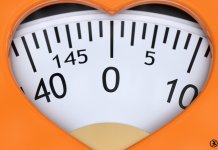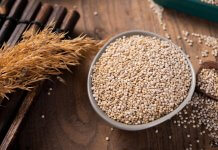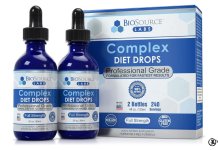I get commissions for purchases made through links on the site. As an Amazon and Clickbank Associate I earn from qualifying purchases. Learn more.
In the gym, you may see others training with a heart rate monitor and wonder to yourself what it is they’re doing differently without one. If you are just starting on your fitness journey, there’s a good chance that you don’t know the answer. The truth of the matter is that cardio is only half of an effective fat-burning workout. On its own, cardio is not effective for losing fat. You can run, jog or walk for hours on end and still see very little results in the way of body composition improvement.
Estimated reading time: 8 minutes
Table of contents
- Cardio workouts are great for helping increase metabolism as well as promoting lean muscle growth.
- Cardio and fat burn are two different methods of training to help you lose weight and attain general body fitness.
- The two methods are also different in that the training used during cardio workouts is not as holistic compared to fat burners.
- Another difference between cardio and fat burn is that cardio relies on the MFR (metabolic fitness training) principle, which focuses on continuous movement for a longer period to promote the burning of more calories.
Differences Between Cardio and Fat Burn
There are several differences between cardio and fat burn, as we will explore below. By understanding these differences, you’ll realize what it takes to effectively lose fat using a combination of both methods.
- Duration of the workout:
The duration of cardio and fat burn workouts is usually different. Generally, fat burners would extend beyond 20-minutes, with a typical session lasting for 30-45 minutes. Cardiovascular sessions, on the other hand, are much shorter-about 5 – 15 minutes.
- Intensity of the workout:
The fat burners are also more intense, with an intensity level that lies between moderate and high. This is because they will be performed using higher speed or greater force movement. Cardiovascular-based workouts on the other hand are less intensive as they require you to move or exercise at an intensity level that is below your Vo2 Max, which is the maximum rate at which you can use oxygen during exercise.
We are not saying that cardio sessions are easy, but they are usually less intense than their fat-burning counterparts.
- Method of training:
The two methods are also different in that the training used during cardio workouts is not as holistic compared to fat burners. For instance, a typical fat burner will focus on several muscle groups or large muscle groups at a time, with an increase of endurance and strength being their end goal. If you were to compare this against a typical cardiovascular workout, it would work almost only one major muscle group, such as your legs or upper body.
- Type of training:
Another difference between cardio and fat burn is that cardio relies on the MFR (metabolic fitness training) principle, which focuses on continuous movement for a longer period to promote the burning of more calories. On the other hand, fat burners focus on HITT (high-intensity training), which is usually a series of high-speed movements for a shorter duration.
- Range of motion:
Another difference between cardio and fat-burning workouts is the range of motion involved in each session. This again has to do with their intensity levels as well as the frequency of use. Cardiovascular workouts are much more limited in their range of motion, with you generally only moving the major muscle groups involved in each exercise. On the other hand, fat burners rely heavily on explosive or faster movements to work different muscles and joints within the body.
- Slim Over 55 Program – Slim Over 55 is customized to meet the needs of women who are affected by lower metabolism. If you’re experiencing hormonal imbalances, you will still see results by using the program.
Combining Cardio and Fat Burn: Achieving Optimal Weight Loss Results
When it comes to shedding excess pounds and achieving your weight loss goals, a multi-faceted approach often yields the best results. Combining cardio workouts with fat-burning exercises can be a powerful strategy to maximize calorie burn, improve cardiovascular health, and sculpt your body. In this guide, we’ll delve into the benefits of combining these two types of workouts and provide practical tips on how to create an effective fitness routine.
1. Understanding Cardio Workouts:
- Explore the world of cardio exercises, including activities like running, cycling, and dancing.
- Discuss the cardiovascular benefits of cardio workouts, such as increased heart rate, improved endurance, and enhanced lung capacity.
- Explain how cardio workouts contribute to calorie burn and can help create a calorie deficit, a key factor in weight loss.
2. The Science of Fat Burn:
- Define fat-burning exercises and their role in targeting stored fat for energy.
- Highlight the metabolic advantages of fat-burning workouts, including improved insulin sensitivity and increased fat oxidation.
- Discuss how fat-burning exercises can lead to muscle toning and a more sculpted appearance.
3. The Synergy of Cardio and Fat Burn:
- Explore how combining cardio and fat-burning exercises can lead to enhanced weight loss results.
- Explain the concept of interval training, which alternates between high-intensity cardio and fat-burning exercises.
- Discuss how this approach can boost metabolism, increase calorie burn both during and after workouts, and promote efficient fat loss.
4. Creating a Balanced Workout Plan:
- Provide guidance on how to design a workout plan that incorporates both cardio and fat-burning elements.
- Offer sample workout routines that strike a balance between aerobic and anaerobic activities.
- Emphasize the importance of variety in workouts to prevent plateaus and keep motivation high.
5. Diet and Nutrition Considerations:
- Stress the role of a balanced diet in supporting your fitness goals, whether it’s cardio, fat burn, or both.
- Offer dietary tips for fueling your workouts effectively and replenishing nutrients post-exercise.
- Discuss the importance of hydration for overall health and workout performance.
6. Tracking Progress and Adjustments:
- Explain how to track your progress when combining cardio and fat-burning workouts, including measuring changes in weight, body composition, and fitness levels.
- Highlight the significance of setting achievable goals and adjusting your workout plan as you make progress.
- Share motivational strategies to stay committed to your fitness routine.
By following the principles outlined in this guide, you can create a fitness regimen that combines the benefits of cardio and fat burn, setting you on the path to achieving your weight loss and fitness aspirations.
Pro Tips
Cardio workouts are great for helping increase metabolism as well as promoting lean muscle growth. If you choose to do cardio, it is recommended that you implement a fat-burning system on top of your cardio workouts to complement what the former has already achieved.
As for fat burners, they too are great methods for helping lose weight but not quite as good at increasing metabolism or promoting lean muscle growth compared to regular cardio training. Fat burner exercises are best done during the off-days of your cardio workout. This will serve to complement your cardio sessions and give you better results overall.
Cardio vs Fat Burn? Which One Should You Choose?
Now that you are aware of the differences between fat burners and cardio exercises, you need to decide which type of exercise suits your fitness level better. At the same time, you have to take into account how frequently you can make it to the gym as well as other kinds of physical activities that might be part of your lifestyle when figuring out a daily fitness plan.
If you are a professional athlete, the fat-burning system will be an excellent choice for you since it focuses on your endurance and strength levels. In addition, their faster movements can help improve agility as well as quickness within the body. Additionally, if you are aiming to compete in high-intensity games such as football or basketball, then fat-burning workouts will help you increase your stamina and energy levels substantially.
If you are a beginner, on the other hand, then cardio exercises might be best for building up your overall fitness level. This is especially true if you want to build endurance in areas like your heart, lungs, and legs as well as increasing strength within several muscle groups at once. Also, if you are only starting and want to lose weight over time, then cardio sessions will be much more suitable for you.
On the other hand, if you have been doing some kind of physical activity before but still can’t seem to get the results that you want after a while, then it might be due to your fitness level. In that case, you should consider increasing the intensity levels of your workout. This is where fat burners will come in to help. Doing these types of workouts will help increase energy and stamina within the body as well as speed up metabolism so that you lose weight much faster over time.
Again, if you are still a beginner and need a bit more time to build up your fitness level, then cardio workouts will still be the best choice for you. This is because they help increase your overall endurance and strength levels while building up several muscle groups at once so that you can become more stable in activities like running or playing football.
- Eat Sleep Burn – Eat Sleep Burn is an all-natural and safe weight loss program with actionable tips that are easy to follow. All you need to adopt healthy sleeping patterns is provided step-by-step in this detailed 28-day program.
Conclusion
Cardio and fat burn are two different methods of training to help you lose weight and attain general body fitness. They each have their advantages and disadvantages. Knowing the difference between them will help you make a more informed decision when it comes to your fitness program.




























